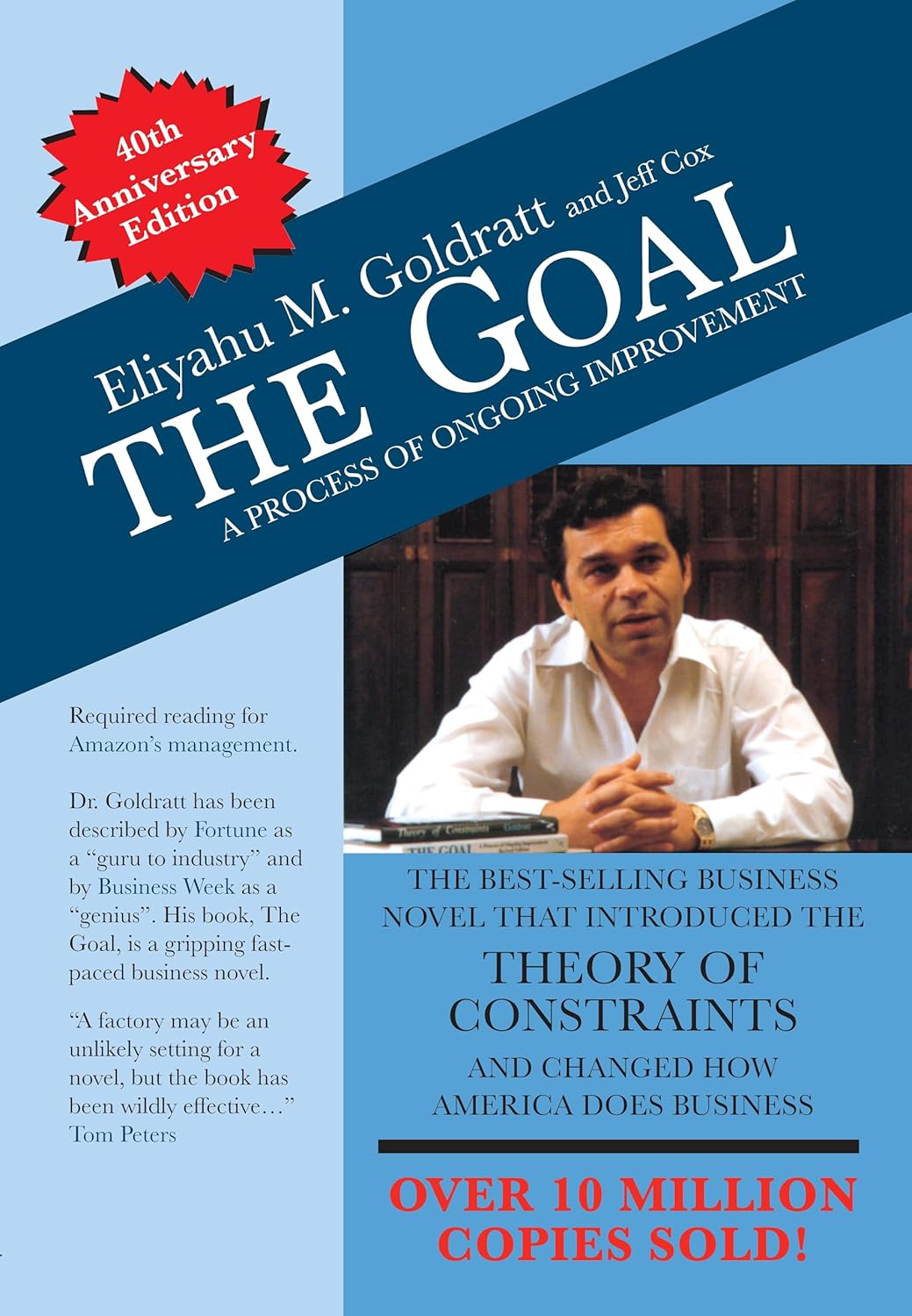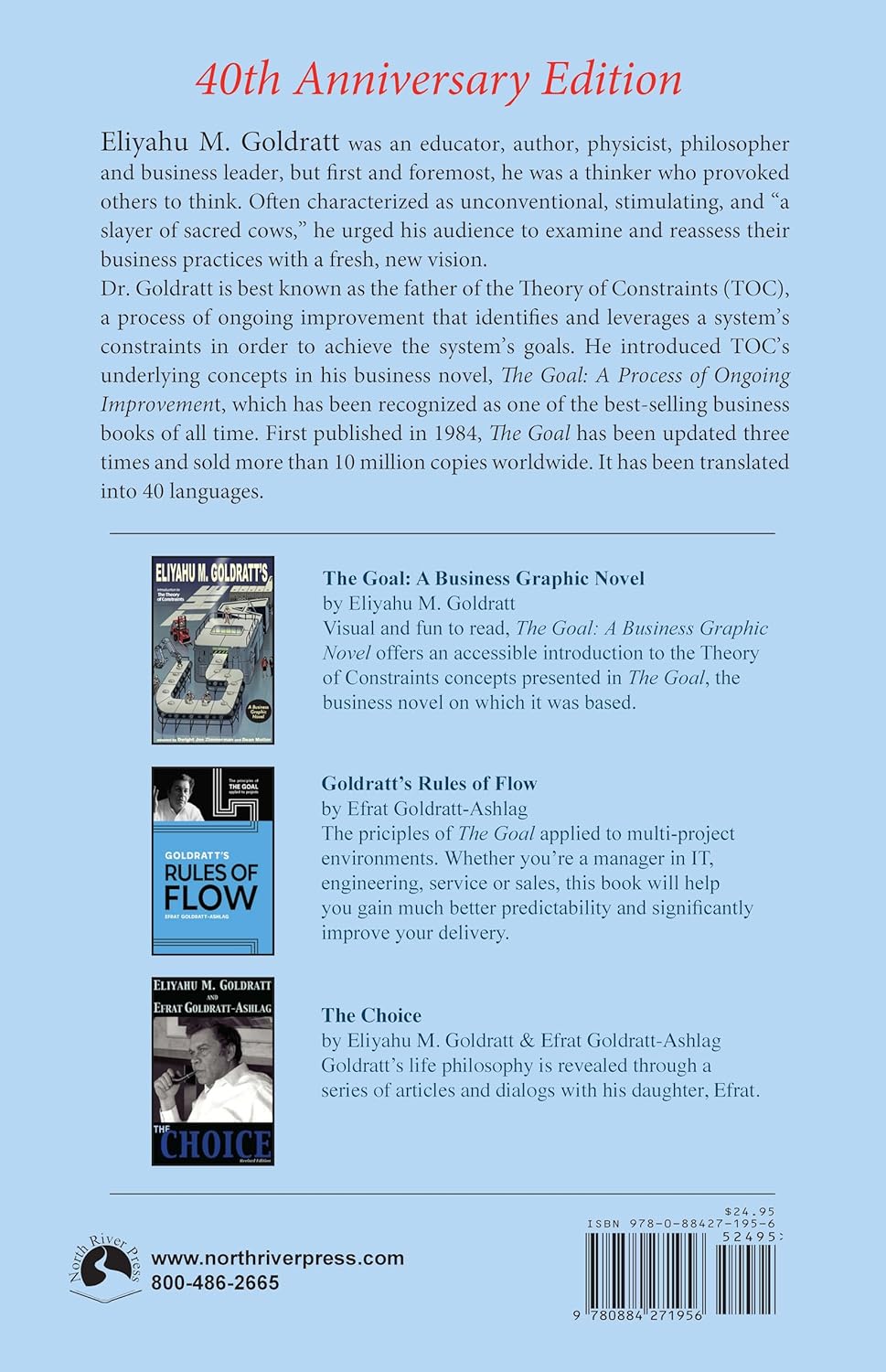I recently picked up The Goal by Eliyahu M. Goldratt and Jeff Cox, intrigued by its reputation as a staple in business literature. As someone who enjoys thrillers and stories with underlying life lessons, I was eager to see how this book could mesh a fast-paced narrative with serious managerial concepts. The blend of fiction and business principles intrigued me, as I strive to understand not just the "how" but also the "why" behind effective management strategies.
The Goal is delivered as an engaging story, focusing on Alex Rogo, a plant manager facing a pressing deadline to save his company. The book explores the Theory of Constraints (TOC), which emphasizes identifying and managing bottlenecks to improve production and overall efficiency. This is something business students and managers alike can find immensely beneficial. Goldratt’s narrative style makes complex concepts more approachable, which I appreciated as I kept turning pages, curious about Rogo’s journey.
One of the highlights of this book, as echoed in customer reviews, is its engaging narrative format. It transforms managerial concepts into a story that is simple yet profound. As noted by other readers, The Goal helped me think critically about operational efficiencies in ways I hadn’t considered before. It was refreshing to digest information through the lens of a storyline rather than as dry theory. The characters are well-crafted and relatable, making the technical aspects feel less daunting.
However, I did encounter some drawbacks. While many readers, such as Corbin Carlton, found it compelling, I can see why some may find the narrative stylized and even cheesy at times. Certain passages did feel drawn out and could lose some readers’ interest, especially if they’re not as invested in character development. Moreover, while its core principles are timeless, parts of the book show their age, particularly in relation to today’s technological advancements in the manufacturing sector. M. T.’s review points out that for readers born after the 1990s, the context may require updates to resonate more effectively.
Despite these drawbacks, Goldratt’s discussions surrounding throughput, inventory, and operational expenses opened my eyes to the interconnected nature of manufacturing processes. The book presents a serious message about understanding and efficiently managing these crucial elements, which I found invaluable in my own professional aspirations. Goldratt’s ultimate takeaway—ensuring that productivity is aligned with the organization’s goals—profoundly resonated with me.
I also appreciated Goldratt’s implementation of the Socratic method through the character Jonah, which encourages readers to discover solutions through guided questions. This is a departure from merely providing answers and instead fosters deeper understanding. I can see how this strategy can guide not only managers but anyone in a decision-making capacity.
In conclusion, The Goal has certainly met my expectations. It successfully balances narrative engagement with serious management principles. While it may not cater perfectly to every reader, particularly the younger crowd less attuned to its context, it nonetheless offers crucial insights for anyone involved in operations management or business strategies. I would wholeheartedly recommend this book to anyone looking to enhance their understanding of operational efficiency, especially those who might initially be skeptical about reading a business-focused narrative. It’s a fantastic read that truly blends theory with practicality—transforming abstract ideas into actionable insights.








